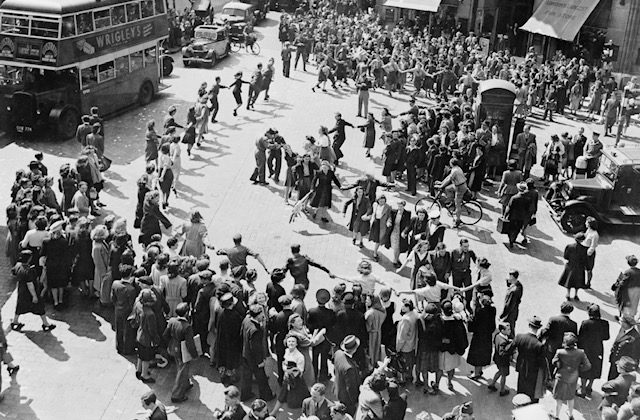After utter devastation came surrender and Peace.
This month marks the 75th anniversaries of the dropping of the atomic bombs on Hiroshima and Nagasaki (6 and 9 August) which resulted in VJ Day on 15 August. All three events intrinsically linked to one another, by the Second World War and the vast destruction and indiscriminate death caused by nuclear weapons which ultimately provoked surrender and brought about peace after six years of war.
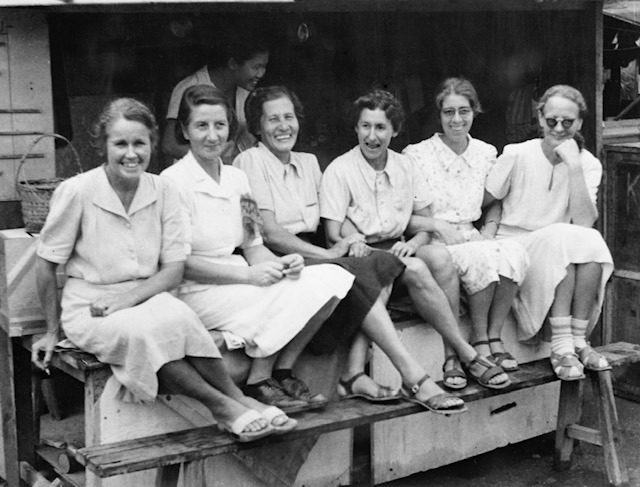
V J Day
The UK celebrates Victory over Japan on August 15th, the name V-J Day, was selected by the Allies after they named V-E Day for Victory in Europe. The surrender of Japan came 3 months after the surrender of Nazi Germany.
The term VJ Day has been applied to both of the days on which the initial announcement of Japan’s surrender was made – August 15, 1945, in Japan, and because of time zone differences, August 14, 1945 (when it was announced in the United States and the rest of the Americas and Eastern Pacific Islands). The USA celebrate the day on September 2, as this was the date when Japan’s formal surrender took place aboard the U.S.S. Missouri, anchored in Tokyo Bay.
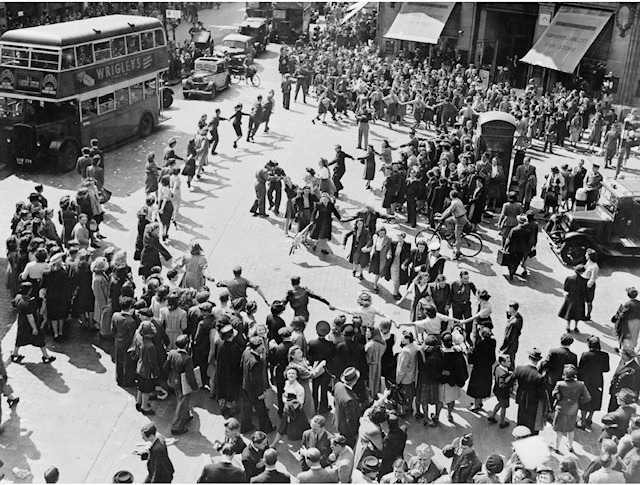
USA DECLARES WAR ON JAPAN
The US army and Japan had been in a deteriorating relationship for a decade, culminating in Japan’s devastating surprise aerial attack on the U.S. naval base at Pearl Harbour on Oahu, Hawaii, on December 7, 1941, which led to an immediate U.S. declaration of war the following day.
Swiftly followed by Japan’s ally Germany, led by Hitler declaring war on the United States, which in turn caused the war raging in Europe into a truly global conflict.
Over the next three years, superior technology and productivity allowed the Allies to wage an increasingly one-sided war against Japan in the Pacific, inflicting enormous casualties while suffering relatively few. By 1945, in an attempt to break Japanese resistance before a land invasion became necessary, the Allies were consistently bombarding Japan from air and sea, dropping some 100,000 tons of explosives on more than 60 Japanese cities and towns between March and July 1945 alone.
The Potsdam Declaration
With Japan on the back foot; UK, USA and China issued the Proclamation Defining Terms for Japanese Surrender as agreed upon at the Potsdam Conference. ‘The Potsdam Declaration’ was a statement that called for the surrender of all Japanese armed forces. On July 26, 1945, allied leaders; President Truman, Winston Churchill, and Chairman of China Chiang Kai-shek issued the document, which outlined the terms of surrender for the Empire of Japan giving an ultimatum that they surrender and the promise of a peaceful government according to “the freely expressed will of the Japanese people.” But if it did not, it would face “prompt and utter destruction.” The Japanese government in Tokyo still refused to surrender.
Prompt and utter destruction
The refusal to surrender led to the devastating decision taken by the United States to drop atomic bombs on Hiroshima and Nagasaki on August 6 and 9 1945.
American B-29 plane Enola Gay dropped an atomic bomb called ‘Little Boy’ on the Japanese city of Hiroshima, killing more than 150,000 people and destroying a 5-square-mile expanse of the city. Three days later, the US dropped a second atomic bomb on Nagasaki, killing 50,000.
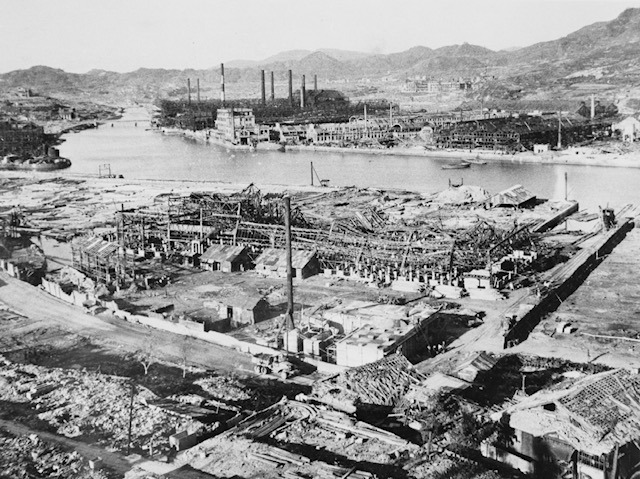
The decisive action taken by Truman had the desired effect as the following day, the Japanese government issued a statement accepting the terms of the Potsdam Declaration. In a radio address in the early afternoon of August 15 (August 14 in the United States), Emperor Hirohito urged his people to accept the surrender, blaming the use of the “new and most cruel bomb” on Hiroshima and Nagasaki for the country’s defeat. “Should we continue to fight,” Hirohito declared, “it would not only result in the ultimate collapse and obliteration of the Japanese nation but would also lead to the total extinction of human civilisation.”
A nationwide broadcast by President Truman was aired at 7 p.m. on Tuesday, August 14, announcing the communication and that the formal event was scheduled for September 2. In his announcement of Japan’s surrender on August 14, Truman said that “the proclamation of V-J Day must wait upon the formal signing of the surrender terms by Japan“.
The most famous kiss captured
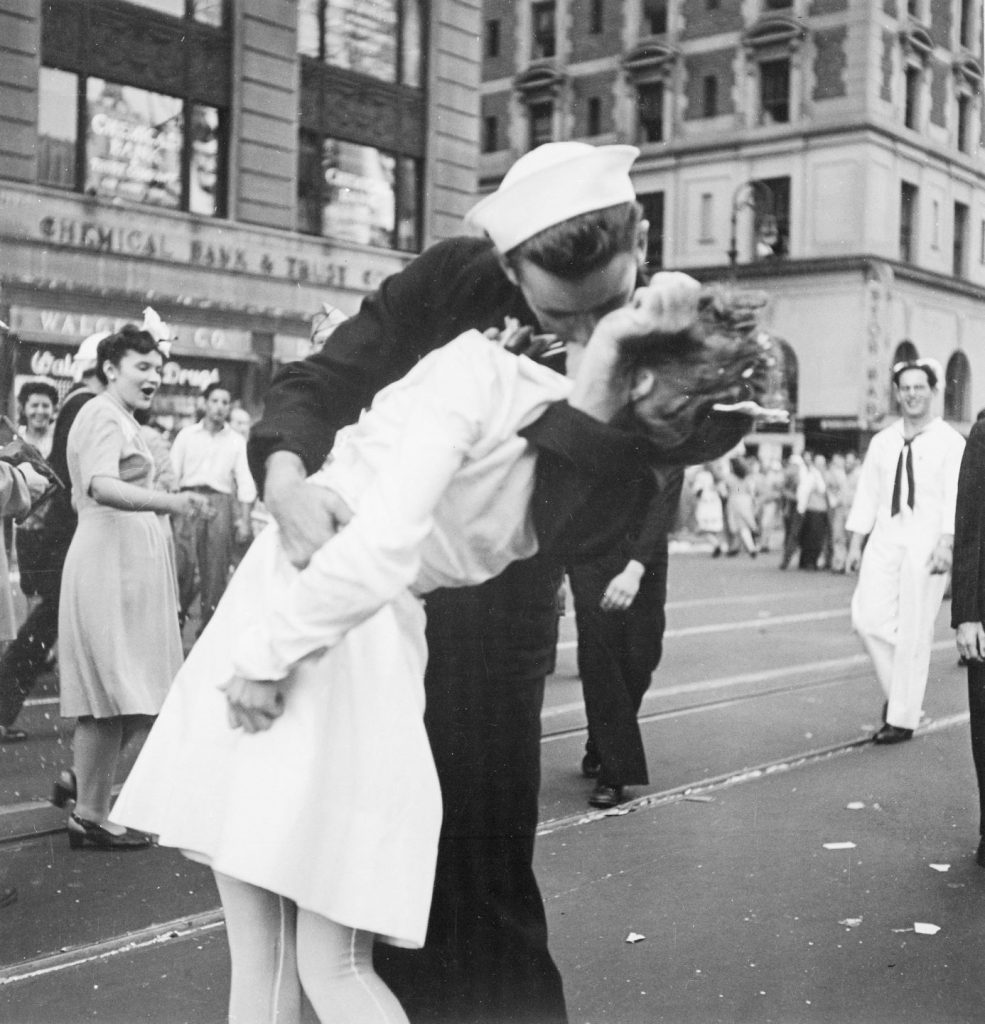
Shortly after the announcement by President Truman people began to gather in celebration, and one of the best-known kisses was captured in a photograph by Alfred Eisenstaedt who went to Times Square to take candid photographs of the revelries and captured a sailor who kissed a nurse in a triumphant embrace.
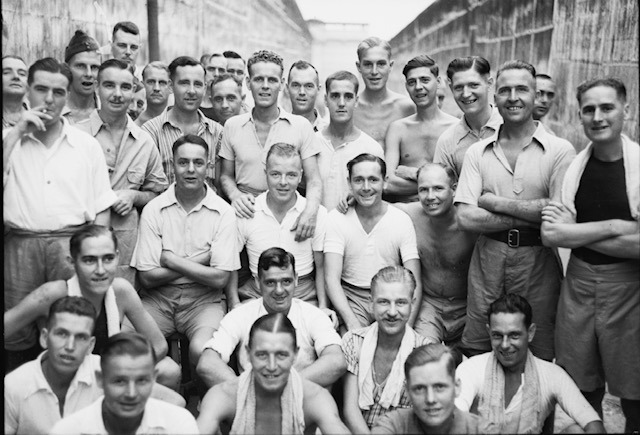
The Fall out
On August 15 and 16, some Japanese soldiers, devastated by the surrender, committed suicide. Well over 100 American prisoners of war were also murdered. In addition, many Australian and British prisoners of war were murdered in Borneo, at both Ranau and Sandakan, by the Imperial Japanese Army. At Batu Lintang Camp also in Borneo, death orders were found which proposed the murder of some 2,000 POWs and civilian internees on September 15, 1945, but the camp was liberated four days before these orders were due to be carried out.
Japanese forces remained in combat with Soviet forces on several fronts for two weeks following VJ-Day.
The Final End
Since the European Axis Powers had surrendered three months earlier on V-E Day, V-J Day was the effective end of World War II, although a peace treaty between Japan and most of the Allies was not signed until 1952, and between Japan and the Soviet Union in 1956.
The DCLI on VJ Day
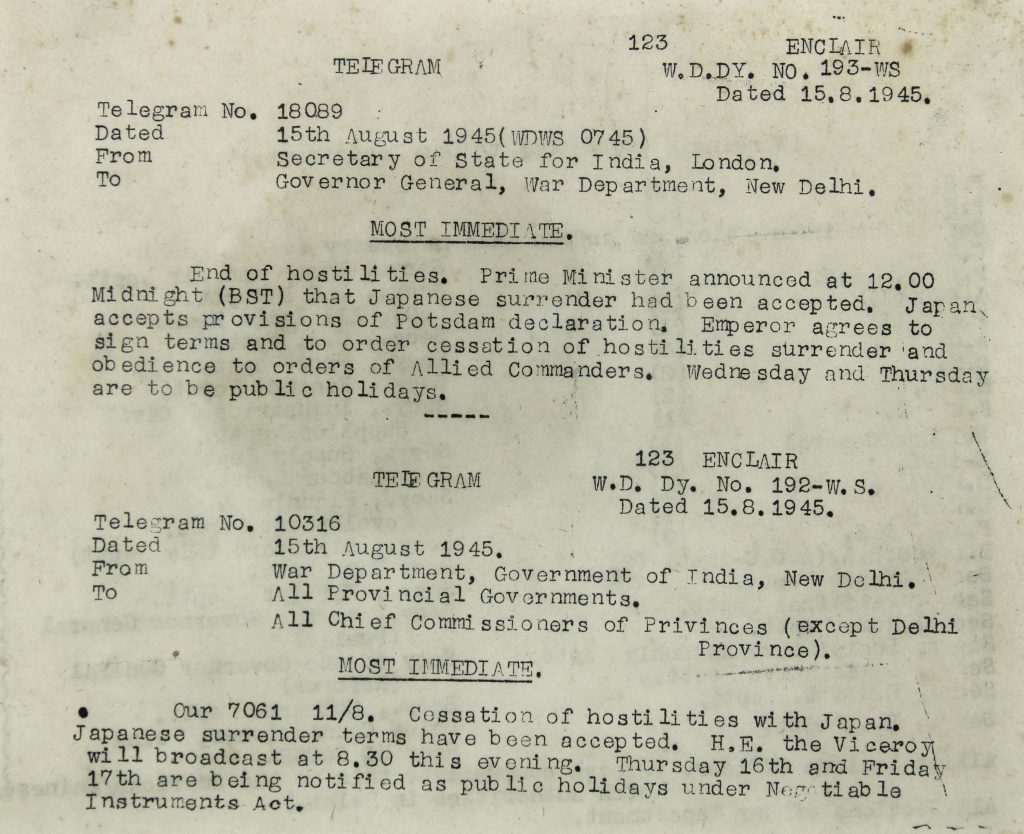
The only DCLI Battalion that was directly impacted by Victory over Japan Day was the 1st Battalion who were training in Sussex in preparation for deployment for war against Japan in Burma when the Japanese surrendered.
We have a telegram on display in the museum which was sent on August 15th 1945 from the Secretary of State for India in London to the Governor General in New Delhi. Notifying them of the end of hostilities and the declaration of surrender by the Japanese Emperor and that the Wednesday and Thursday would be public holidays!

